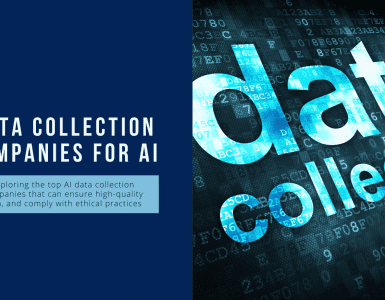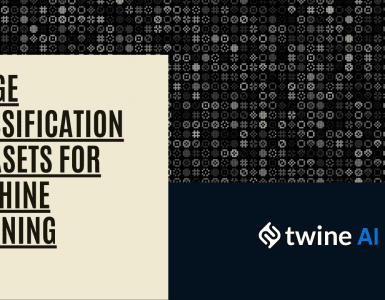
Introduction
Image annotation has become fundamental to most AI/ML applications, from self-driving cars that autonomously tread busy streets to drones that capture fields to identify rotting crops. However, achieving accurate results requires training these models with vast datasets of unbiased and accurately annotated images, and this is where many businesses struggle.
So how can they guarantee the accuracy of their training data while staying on budget, meeting tight deadlines, and annotating massive volumes of images?
The answer lies in image annotation outsourcing. By partnering with an image annotation service provider, you can delegate AI data labeling tasks for higher quality, precision, and accuracy. This blog will explore the benefits of outsourcing image annotation to professional service providers. But first, let us go through a few challenges that come with managing the process internally.
Challenges of in-house image annotation
Although in-house image annotation offers greater control and allows for closer project monitoring, it also presents significant challenges, including:
1. Cost
Image annotation requires extensive domain knowledge and technical expertise to work on specialized software. Recruiting and retaining skilled image annotators with the necessary expertise is expensive, especially in competitive job markets. Additionally, image annotation is a volume-based operation. It necessitates dedicated infrastructure, quality control mechanisms, and dedicated software and tools; requiring significant cost considerations.
2. Scalability
As the volume of data grows, scaling up and managing an in-house image annotation team becomes increasingly challenging and expensive. You may find yourself in a cycle of ongoing recruitment, onboarding, and training to cater to the growing workload.
3. Quality of annotations
Ensuring high-quality, consistent annotations across a large dataset is a significant challenge as it often involves subjective interpretation. It requires years of experience, rigorous training, and strict adherence to the defined guidelines; something that you need professional guidance for.
Further, some annotations, such as delineating object boundaries or identifying complex 3D elements, require a high level of precision that only professional image annotators can offer. Additionally, implementing robust quality control measures is a multi-level review process that requires significant time that you may not have.
4. Data privacy concerns
Handling sensitive datasets, such as those with personally identifiable information (PII) in images, demands strict data security and privacy measures. While your internal teams may excel at image annotation, they might lack familiarity with these security protocols. This gap can potentially result in privacy breaches and unintentional biases.
Pro tip: Consider practical factors like the number and kind of images your team will annotate, appropriate manpower, and a realistic project timeline to gauge the feasibility of in-house image annotation after considering the challenges mentioned above.
What image annotation services can be outsourced?
Once you have assessed your project requirements, you can opt for the following data labeling solutions:
- 2D/3D bounding box automation: Defining and labeling the boundaries of objects in images.
- Semantic segmentation: Labeling each pixel in an image with the corresponding object category.
- Keypoint/landmark annotation: Identifying and labeling key points or landmarks by plotting sequential dots at specific locations.
- Polygon annotation: Marking the exact borders of images with irregular shapes.
- Line and polyline annotation: Identifying and marking different kinds of linear structures.
- Dataset creation: Compiling annotated images to form training datasets.
How can outsourcing image annotation help your business?
Instead of annotating images internally, many businesses opt for third-party, professional image annotation service providers as they offer several advantages. Some of them are mentioned below.
Expertise
Outsourcing image annotation to professional service providers enables you to leverage their technical expertise and industry experience. These providers are adept at utilizing advanced annotation tools like Labelbox, Dataloop, Appen, and Hive Data, integrating them into your existing workflow. Additionally, they can understand your intended use cases and work around edge cases to ensure coherence.
Cost-effectiveness
Engaging with an annotation service provider eliminates the need to build and train internal annotation teams. Additionally, outsourcing the process eliminates the necessity for dedicated hardware infrastructure, tools, and software, considerably reducing operational costs.
Streamlined process
Image labeling services allocate teams of trained annotators who are solely focused on the task, allowing them to enhance your operational efficiency. Additionally, they have an established workflow that minimizes delays and results in faster turnaround times.
More customizations
Besides having established image annotation guidelines, professional service providers can also develop customized taxonomies (hierarchical structures) and labeling schemes to align with your requirements. For example, in a car parking system, they might include categories such as “parking spaces,” “vehicles,” and “parking lot infrastructure,” with further subdivisions for specific types of parking spaces (e.g., “compact,” “disabled”) and vehicle types (e.g., “sedan,” “SUV”).
Quality control and benchmarking
Image annotation service providers have established quality control measures. Their annotations are reviewed at multiple stages, often involving a combination of annotators, supervisors, and advanced tools to identify potential inconsistencies. Additionally, they often have an established set of “gold standard” annotations that serve as a benchmark for the quality of the overall dataset.
Flexibility in scaling (up or down) operations
Outsourcing allows you to scale your annotation needs up or down as required without the constraints of managing a fixed in-house team. This flexibility helps you address fluctuating workloads and seasonal demands more efficiently.
What to look for in an image annotation service provider?
Outsourcing data annotation services offers a reliable and cost-effective solution for ensuring training datasets are produced efficiently and within your budget. However, selecting a suitable image annotation service provider is crucial to ensuring consistent image quality. Here are some factors to consider before finalizing the collaboration.
- Approach: Look for a service provider that offers human-supervised, AI-assisted image annotation. While human annotators ensure contextual relevance and accuracy, AI-driven automation expedites the process.
- Quality and accuracy: Seek a provider capable of delivering annotations with high levels of accuracy and quality, especially when compared to algorithmically generated datasets. To gauge their expertise, avail of a free sample of their annotated images before signing the agreement.
- Flexible pricing model: Look for a flexible and customizable pricing model. Many service providers allow clients to opt and pay for their specific requirements, accommodating varying needs and budgets.
- Scalability without compromising quality or project deadline: Ensure that the provider can cater to changing requirements during both upscaling and downscaling periods. This is vital if you’re seeking a long-term collaboration.
- Domain expertise and industry experience: Look for a service provider with relevant expertise and experience in your sector, particularly if specialized skills are required, such as working with medical imaging or autonomous driving vehicle datasets.
- Responsiveness: Ensure that the annotation provider offers 100% transparency and is responsive to your project needs and deadlines. They should communicate promptly and be capable of addressing any errors or biases in datasets.
Pro tip: Variations and disagreements among your team members or between them and outsourced annotators are typical of the process. Nevertheless, proceed consciously if there’s significant resistance and re-annotated datasets fail to show noticeable improvements in quality or accuracy. So keep an eye out when you’re considering a long-term partnership.
The Takeaway
The precision of image annotation stands as a pivotal factor in determining the success of your ML application, regardless of whether you manage it internally or collaborate with an annotation service provider. While the in-house approach offers more control, it poses certain challenges, such as resource constraints, scaling operations, and data security concerns. On the other hand, outsourcing streamlines your annotation workflow and significantly reduces overhead and other hidden costs. You only need to cater to an all-inclusive service fee. So outsource image annotation to get access to accurate training datasets for your cutting-edge solutions.








